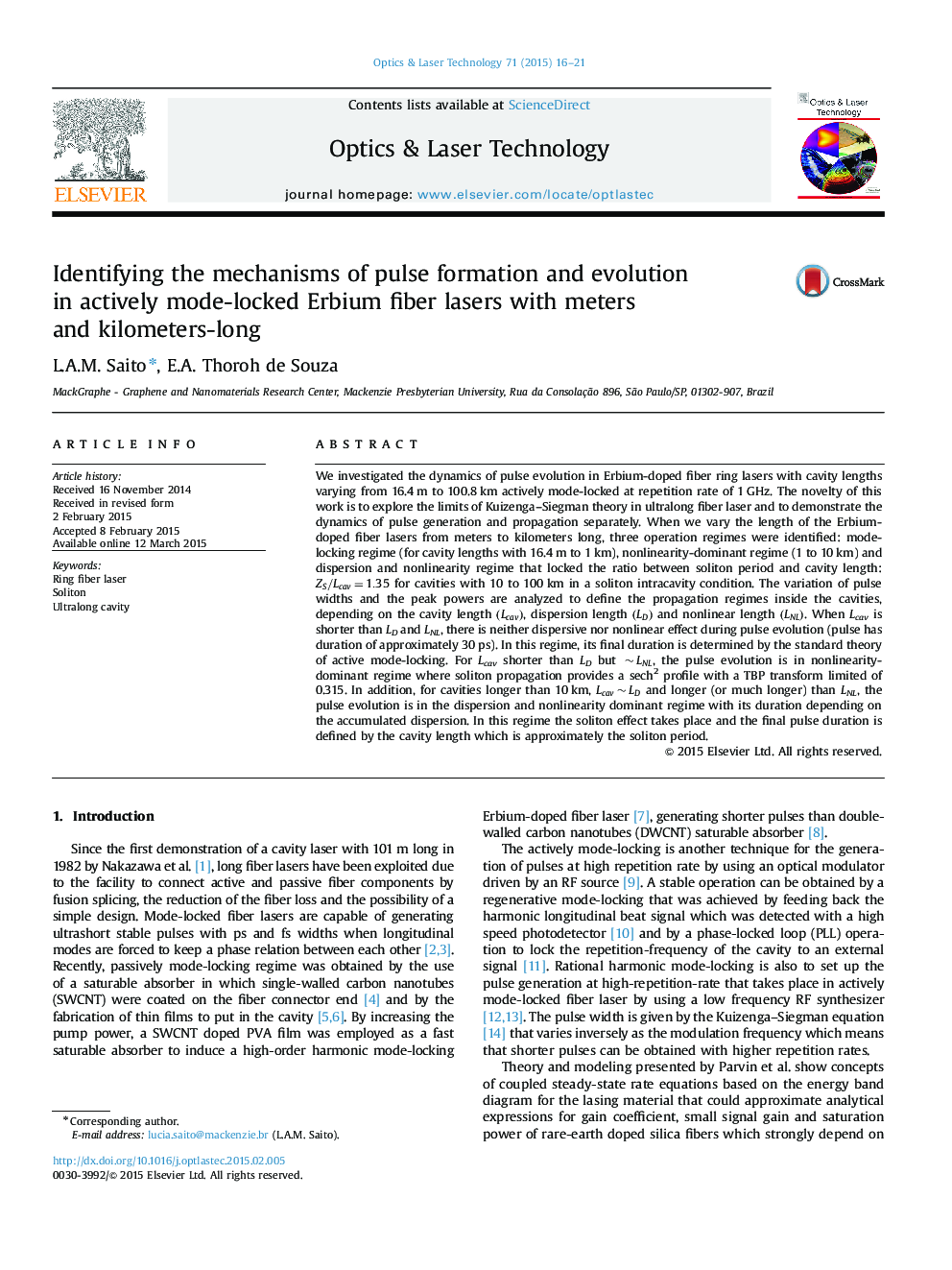| کد مقاله | کد نشریه | سال انتشار | مقاله انگلیسی | نسخه تمام متن |
|---|---|---|---|---|
| 7130238 | 1461627 | 2015 | 6 صفحه PDF | دانلود رایگان |
عنوان انگلیسی مقاله ISI
Identifying the mechanisms of pulse formation and evolution in actively mode-locked Erbium fiber lasers with meters and kilometers-long
ترجمه فارسی عنوان
شناسایی مکانیزم تشکیل پالس و تکامل در لیزر فیبر اریب فعال با حالت فعال با متر و کیلومتر طول
دانلود مقاله + سفارش ترجمه
دانلود مقاله ISI انگلیسی
رایگان برای ایرانیان
کلمات کلیدی
موضوعات مرتبط
مهندسی و علوم پایه
سایر رشته های مهندسی
مهندسی برق و الکترونیک
چکیده انگلیسی
We investigated the dynamics of pulse evolution in Erbium-doped fiber ring lasers with cavity lengths varying from 16.4Â m to 100.8Â km actively mode-locked at repetition rate of 1Â GHz. The novelty of this work is to explore the limits of Kuizenga-Siegman theory in ultralong fiber laser and to demonstrate the dynamics of pulse generation and propagation separately. When we vary the length of the Erbium-doped fiber lasers from meters to kilometers long, three operation regimes were identified: mode-locking regime (for cavity lengths with 16.4Â m to 1Â km), nonlinearity-dominant regime (1 to 10Â km) and dispersion and nonlinearity regime that locked the ratio between soliton period and cavity length: ZS/Lcav=1.35 for cavities with 10 to 100Â km in a soliton intracavity condition. The variation of pulse widths and the peak powers are analyzed to define the propagation regimes inside the cavities, depending on the cavity length (Lcav), dispersion length (LD) and nonlinear length (LNL). When Lcav is shorter than LD and LNL, there is neither dispersive nor nonlinear effect during pulse evolution (pulse has duration of approximately 30Â ps). In this regime, its final duration is determined by the standard theory of active mode-locking. For Lcav shorter than LD but ~LNL, the pulse evolution is in nonlinearity-dominant regime where soliton propagation provides a sech2 profile with a TBP transform limited of 0.315. In addition, for cavities longer than 10Â km, Lcav~LD and longer (or much longer) than LNL, the pulse evolution is in the dispersion and nonlinearity dominant regime with its duration depending on the accumulated dispersion. In this regime the soliton effect takes place and the final pulse duration is defined by the cavity length which is approximately the soliton period.
ناشر
Database: Elsevier - ScienceDirect (ساینس دایرکت)
Journal: Optics & Laser Technology - Volume 71, August 2015, Pages 16-21
Journal: Optics & Laser Technology - Volume 71, August 2015, Pages 16-21
نویسندگان
L.A.M. Saito, E.A. Thoroh de Souza,
